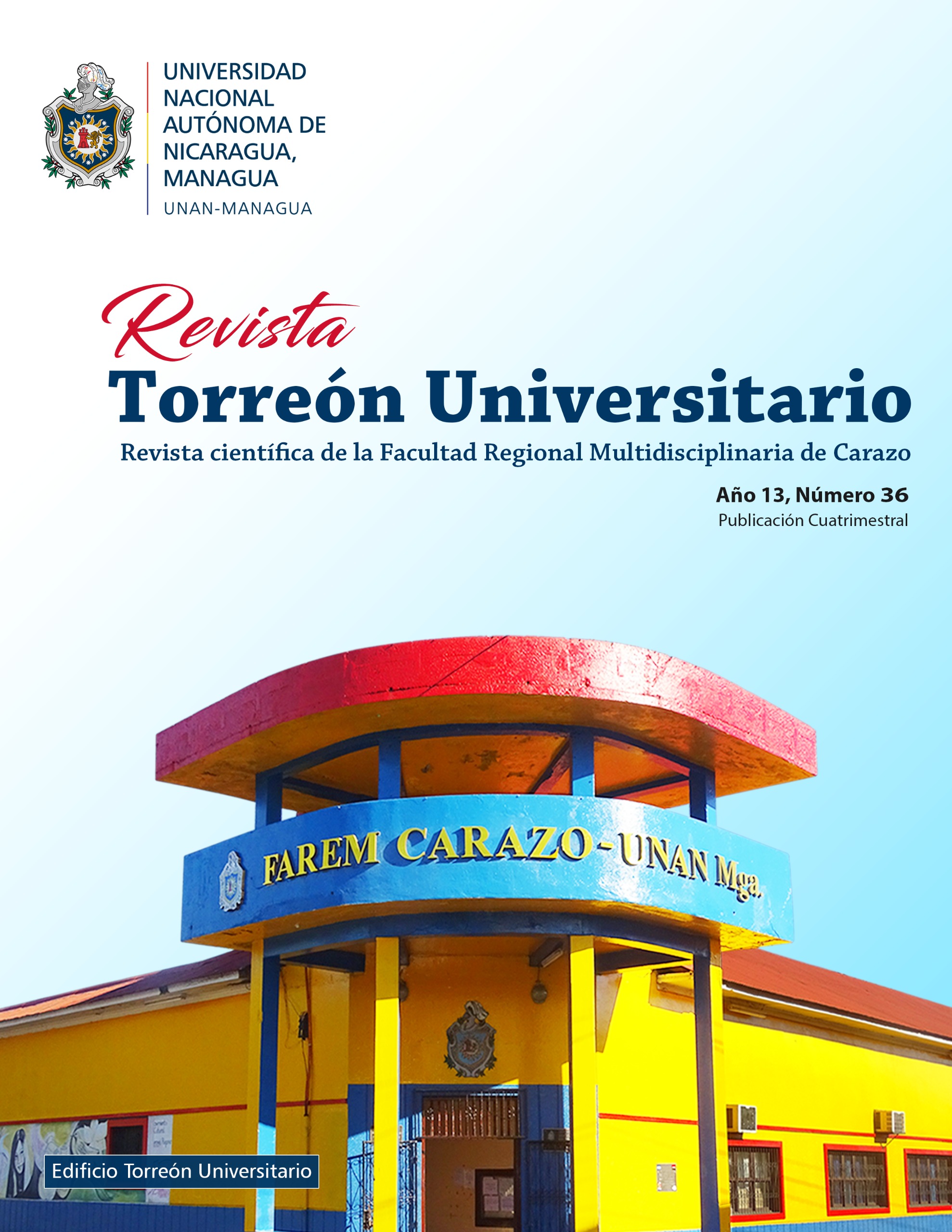Personality Dimensions and Work Stress in Nursing Professionals at the Santiago Regional School Hospital
DOI:
https://doi.org/10.5377/rtu.v13i36.17622Keywords:
Personality Dimensions, Work-related stress, Growth curveAbstract
The activities of nursing staff demand tasks that expose them to extreme stress in the organizational environment, and work stress is one of the effects that arise from a mismatch between the individual's abilities and the demands of his or her job. The activities of nursing staff demand tasks that expose them to extreme stress in the organizational environment, and work stress is one of the effects that arise from a mismatch between the individual's abilities and the demands of his or her job. The present research seeks to evaluate the predictive effect of personality dimensions on the levels of work stress in these professionals. The present research seeks to evaluate the predictive effect of personality dimensions on the levels of work stress in these professionals. This study was carried out from a descriptive approach, and longitudinal design represented in a growth curve model that modeled the change of stress over time; The instruments used were Maslach's Burnout Inventory that measured stress levels and Eysenck's Personality Inventory was used to measure neuroticism, extraversion, and psychoticism. The results revealed that the personality dimensions in which the participants obtained the highest score were in Psychoticism, as 43.2% of the participants presented high scores and 40.5% very high, while for the dimensions of extraversion and Neuroticism the predominant scores were low and average.
Downloads
References
Arrogante, O. (2016) Estrategias de afrontamiento al estrés laboral en Enfermería. Metas de enfermería, 10(19). https://www.enfermeria21.com/revistas/metas/articulo/81011/.
Balguera, N., Pineda, R. (2020). Modelos de curva de crecimiento: modelos lineales mixtos vs datos funcionales. Universidad SantoTomás Repository.usta.edu.com.Repository.usta.edu.com:https://repository.usta.edu.co/bitstream/handle/11634/22477/2020nancypatriciabalaguera.pdf?sequence=5&isAllowed=y.
Betancourt, M., Domingues , W., Pelaes Flores, I., & Herrera, M. (2021). Estrés laboral en el personal de enfermería del área de UCI durante la pandemia COVID-19. Revista científica multidisciplinaria. Universidad estatal del sur de Manabí. https://doi.org/10.47230/unesum-ciencias.v4.n1.2021.308
Bonnstetter. (07 de 12 de 2020). TTI SUCCESS INSIHGTS. Obtenido de TTI SUCCESS INSIHGTS: https://blog.ttisi.com/es/como-impacta-el-agotamiento-en-los-introvertidos-y-en-los extrovertidos#:~:text=%22Los%20extrovertidos%20comienzan%20a%20sufrir%20de%20agotamiento%20con,familiares%20y%20compa%C3%B1eros%20de%20trabajo%20de%20manera%20regular.%22
Cañadas, G., Lozano, L., & Vargas C. (2014). Evidencia de Validez Factorial de Maslach Burnout Inventory y Estudio los niveles de Burnout en profesionales sanitarios. Revista Latinoamericana de psicología,46(1). http://www.scielo.org.co/scielo.php?script=sci_arttext&pid=S012005342014000100005&lng=en&tlng=es.
Merino, C. (2017) Consistencia Interna del Eysenck Personality Questionnaire. Revista iberoamericana de diagnóstico y evaluación psicológica, 4(57). 10.21865/RIDEP57.4.14.
Paris, L. (2012) Estrés laboral en trabajadores de la salud. Teseo.
Rodríguez, R., Rivas, S. (2011) Los procesos de estrés laboral y desgaste profesional (burnout): diferenciación, actualización y líneas de intervención. Medicina y seguridad del trabajo, 57(1). https://dx.doi.org/10.4321/S0465-546X2011000500006
Sánchez, C. (2012). La psicología en el ámbito Jurídico. Reflexiones ético- clínicas a través de un estudio cualitativo de casos. Buenos Aires.
Vásquez, S., & González, Y. (2020) El estrés y el trabajo de enfermería: factores influyentes. Másvita, 2 (2). https://doi.org/10.47606/ACVEN/MV0010.
Vásquez Mendoza, S., & González Marquéz , Y. V. (2020). El estres y el trabajo de enfermería: factores influyentes . Másvita, 51-59.
Published
How to Cite
Issue
Section
License
Copyright (c) 2024 Universidad Nacional Autónoma de Nicaragua, Managua

This work is licensed under a Creative Commons Attribution-NonCommercial-NoDerivatives 4.0 International License.
The authors who publish in this journal agree to the following terms.
- The author or authors of the articles, essays or research grant the National Autonomous University of Nicaragua, Managua (UNAN-Managua) the editing rights (copyright) of the submitted work, therefore the University has the exclusive right to publish the article for the entire copyright period.
- These copyrights/authors authorize Torreón Universitario Magazine and the University to edit and disseminate/publish the article in said Magazine, including printed and electronic reproduction, storage, retrieval and any other type of publication, and sources of secondary information as services. of summaries and databases, they also empower it to protect the article against unauthorized use for dissemination by printed or electronic media (PDF, HTML, EPUB, XML or others).
License for use of content
The magazine uses the Creative Commons Attribution-NonCommercial-NoDerivs 4.0 International License.
Under this statement:

This journal is licensed under a Creative Commons Attribution-NonCommercial-NoDerivatives 4.0 International License. It can be copied, distributed and transmitted publicly as long as the author and source are cited (Revista Torreón Universitario), it should not be modified or used for any commercial purpose. The full license can be found at http://creativecommons.org/licenses/by-nc-nd/4.0/.



